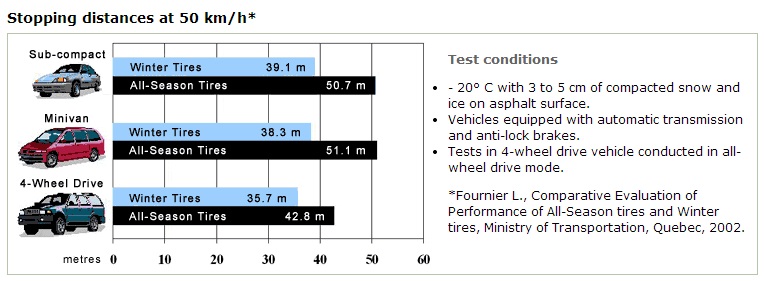Planning to travel and visit relatives over the holidays? Here’s one winter driving scenario you could experience: First, there’s a moment of incomprehension when your steering wheel suddenly refuses to do your bidding. Panic starts to set in, your vehicle skates along the road – you’re no longer steering but praying you don’t veer into oncoming traffic.
You see the faces of happy families blur by in the opposing lane of holiday traffic, oblivious to a potential imminent collision. Time seems to surreally slow down as your brain grasps for information on what to do in a skid. You take your foot off pedals, shift into neutral, and look to side of the road. Suddenly there’s a graceful slide, all white fills the windshield, and the car lands with a soft thud in the forgiving snowbank. If you’ve been lucky enough to survive a skid on white ice or black ice while driving in a Canadian winter, then you know this scenario all too well.
As a grateful survivor of a traumatic winter driving incident, you’ve learned the hard way to deeply respect Mother Nature, and are quite content to avoid driving in inclement weather, delay a trip until the roads are ploughed, and knowingly reduce speed, while other less experienced drivers whiz by. The following information is a good refresher for winter driving veterans and, also for the uninitiated could potentially save a life.
Employees at high risk
Did you know driving is one of the highest risk activities an employee can undertake – especially in winter? Motor vehicle incidents in Ontario account for more than 38 percent of all worker traumatic fatalities.This number increases to 45 percent when we include powered industrial vehicles or powered mobile industrial equipment in the workplace, i.e. vehicles used to lift and move material, such as forklifts, pallet trucks, walkie stackers, and scissor lifts.
Unlike a worksite, employers cannot control the types of drivers and vehicles that share the road with their employees. If employers have workers driving from site to site, travelling to a meeting, or even going out on a coffee run, the Workplace Safety and Insurance Board considers them to be occupational drivers. Between 2006 and 2010, the board reported more than 7,000 lost-time injury claims and 149 fatalities involving occupational driving.

From Workplacesafetynorth.ca :


